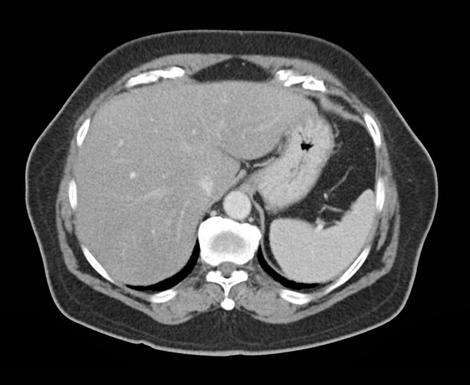Cancer is often detected late. Tumor markers and other blood values can offer an initial indication of a potential cancer diagnosis. Learn more in this article.
Many cancers are diagnosed at an advanced stage
In Switzerland, there are approximately 42,750 new cases of cancer each year. While some types of cancer (such as testicular or breast cancer) tend to cause noticeable symptoms early on, others—like pancreatic or lung cancer—often remain undetected until they have reached a more advanced stage. A significant number of cancers are diagnosed late, which can limit treatment options and negatively impact the prognosis.
That’s why early detection is so crucial—and ideally, in the least invasive way possible. Identifying cancer at an early stage can improve treatment outcomes, increase survival rates, and significantly boost the chances of successful therapy.
How can a blood sample indicate cancer?
Certain types of cancer can lead to changes in routine blood values, such as an increase or decrease in the number of specific blood cells (like white blood cells, red blood cells, or platelets).
Some cancers produce substances called tumor markers that can be measured in the blood. Elevated levels of specific tumor markers may indicate the presence of cancer—although these markers can also be elevated in non-cancerous conditions.
If you’d like to better understand your individual cancer risk, we recommend this podcast clip featuring Dr. Peter Attia and Dr. Andrew Huberman.
Reducing Cancer Risk, Source: Youtube
Can a complete or basic blood count reveal cancer?
While abnormal results may offer an initial clue, a definitive diagnosis always requires additional tests, including imaging procedures such as MRI.
However, the situation is different with blood cancers (leukemia), where certain abnormal blood values can be strong indicators. These may include:
- Increased or decreased number of white blood cells (leukocytes)
- Changes in the composition of white blood cells
- Reduced number of red blood cells (erythrocytes) and/or low hemoglobin (Hb) levels
- Lower platelet count (thrombocytes)
Nevertheless, a bone marrow examination is essential for a definitive diagnosis.
Which blood values can change with cancer?
Cancer can influence certain blood values by affecting the number of red or white blood cells or platelets. In addition to specific blood tumor markers, general inflammatory markers such as CRP can also be elevated in the blood.
CRP is a protein produced by the liver that can also rise in response to bacterial infections, chronic inflammation, or injury. Because elevated inflammatory markers can have many causes, they are not a specific sign of cancer.
Blood count
The values for blood cells (red blood cells, white blood cells, and platelets) in a standard blood count can sometimes provide hints of cancer:
- Red blood cells (erythrocytes): A low red blood cell count (anemia) can be seen in various types of cancer, especially blood cancers, but also in tumors that cause bleeding or impair bone marrow function.
- White blood cells (leukocytes): An increased count may indicate leukemia or other blood cancers, but can also occur with infections or inflammation. A decreased count (leukopenia) may appear in some cancers or as a side effect of chemotherapy.
- Platelets (thrombocytes): A reduced platelet count (thrombocytopenia) may result from certain cancers or chemotherapy, increasing the risk of bleeding. On the other hand, an elevated platelet count (thrombocytosis) can also be seen in some cancers and in other conditions like infection or inflammation.
Other blood values
- Liver values (ALT, AST, ALP, Gamma-GT): Elevated liver enzymes may indicate liver metastases or liver involvement in cancer, but can also result from conditions like fatty liver disease or viral hepatitis.
- Kidney values (creatinine, urea): These markers typically only rise when kidney function is already significantly impaired. Other indicators like the glomerular filtration rate (GFR) or cystatin C can help detect kidney disease earlier.
- Electrolytes (sodium, potassium, calcium): Low sodium levels (hyponatremia) are the most common electrolyte imbalance in patients with malignant cancers, with a prevalence ranging from about 4% to 47%.
- Inflammatory markers (CRP, ESR): A meta-analysis found that 90% of the studies analyzed reported a link between elevated CRP levels and higher mortality in patients with solid tumors. This correlation was particularly strong in gastrointestinal cancers and kidney cancer.
A malignant tumor—also referred to as a cancerous tumor—is characterized in oncology as uncontrolled cell growth that invades surrounding tissue, causes destruction, and can form metastases. Unlike benign tumors, malignant tumors grow aggressively, differ structurally from normal cells, and can spread through the blood or lymphatic system. Treatment usually involves a combination of surgery, chemotherapy, and radiation therapy, with early detection significantly improving prognosis.
Tumor Markers and Other Biomarkers
Tumor markers are specific proteins, hormones, or enzymes produced either by cancer cells themselves or by the body in response to a tumor. They are a subgroup of biological markers and can be detected in blood or urine. Elevated levels of certain tumor markers may indicate the presence of cancer, but they are not specific to one type of cancer and can also be elevated in other, non-cancerous conditions.
Some of the most important tumor markers include:
- AFP (Alpha-Fetoprotein): Elevated levels may suggest liver tumors (such as liver cancer) or metastases from gastrointestinal tumors. In pregnant women, high AFP can indicate developmental abnormalities in the fetus.
- Bilirubin: This bile pigment is produced during the breakdown of hemoglobin (found in red blood cells) and is normally excreted in bile. High levels in the blood may indicate liver damage, including liver tumors.
- CA 125: Elevated levels may be a sign of ovarian cancer, but can also be seen in liver or pancreatic inflammation and certain autoimmune diseases.
- CA 15-3: This marker may be elevated in several types of cancer, including ovarian, breast, liver, pancreatic, and uterine cancers.
- CA 19-9: High levels can indicate liver, stomach, pancreatic, ovarian, or colorectal cancer.
- CEA (Carcinoembryonic Antigen): Elevated CEA levels may be associated with breast, lung, colon, or stomach cancers, but can also be found in liver cirrhosis or in smokers.
- PSA (Prostate-Specific Antigen): Elevated PSA levels may point to prostate cancer, but can also be caused by benign prostate conditions.
- HCG (Human Chorionic Gonadotropin): HCG is a hormone typically produced during pregnancy and is detected in pregnancy tests. However, it can also serve as a tumor marker, with elevated levels indicating certain cancers—particularly testicular cancer, but also breast, liver, or kidney cancer.
- BRCA1 and BRCA2: Mutations in the BRCA1 or BRCA2 genes significantly increase the risk of developing breast and ovarian cancer, as well as some other cancers. Around 60% of women with these mutations will develop breast cancer during their lifetime, compared to about 13% in the general population.
- HER2: Overexpression of the HER2 gene—meaning the body produces too much of this protein—occurs in about 15–20% of breast cancers and is associated with more aggressive tumor growth.
- TP53: Mutations in the TP53 gene are common across many cancer types. These mutations often lead to uncontrolled cell growth and resistance to treatment.
How can cancer cells be detected in the blood?
In addition to traditional diagnostic methods like blood counts and imaging procedures, innovative tests such as liquid biopsy and the Galleri test are gaining increasing importance. These modern approaches make it possible to detect cancer at an early stage by analyzing circulating tumor cells (CTCs) or cell-free tumor DNA (ctDNA) in the blood.
The detection of circulating tumor cells (CTCs) or circulating tumor DNA (ctDNA) can indicate the presence of cancer and provide insights into the cancer type and its aggressiveness.
The Galleri test, developed in the U.S., is an innovative cancer blood test for early cancer detection. It analyzes cell-free DNA (cfDNA) released by tumor cells into the blood and can identify more than 50 different types of cancer—including many for which no standard screening tests currently exist. Using advanced sequencing technologies and artificial intelligence, the Galleri test can not only detect cancer signals but also suggest the likely tissue of origin.
These tests are still relatively new and are currently used primarily in cancer research and for certain types of cancer. They are not yet considered standard screening tools.
Although not yet established as a standalone method for cancer diagnosis, liquid biopsy is playing an increasingly important role in cancer diagnostics, monitoring disease progression, and guiding treatment—particularly by identifying genetic mutations that may influence therapy.
Do you always have abnormal blood values if you have cancer?
No, not necessarily.
Even if cancer has already spread (metastasized), it doesn’t always show up in a blood test.
Some types of cancer don’t directly affect blood counts or tumor markers—particularly cancers in solid organs that don’t involve the blood or blood-forming tissues.
Certain cancer cells produce little to no detectable tumor markers in the blood, making these cancers difficult to identify through standard lab tests.
In some cases, the changes in blood values caused by cancer are very subtle—just slightly outside the normal range. These minor deviations can easily go unnoticed during routine bloodwork and require targeted testing and careful interpretation by a physician.
In the early stages of cancer, blood values may still appear completely normal because the tumor is small and hasn’t yet caused measurable effects in the blood. It’s only in later stages, when the tumor grows or spreads, that blood values might begin to shift. Even then, metastases don’t always impact blood values.
Cancer treatments like chemotherapy or radiation therapy can also affect blood counts—temporarily lowering certain blood cell levels or, in cases of successful treatment, improving blood results.
Takeaway: Blood tests are just one piece of the cancer diagnosis puzzle
Blood tests can provide valuable clues about potential cancers, but they are not definitive diagnostic tools. Not every abnormal blood value means cancer—and normal values don’t necessarily rule it out.
Interpreting test results always requires a comprehensive understanding of the individual’s health status and further diagnostic testing.
At aeon, we combine advanced blood testing with whole-body MRI to provide a more complete picture of your health. While standard check-ups often miss certain types of cancer, our screening also includes evaluations for pancreatic cancer, kidney cancer, and blood cancer. This comprehensive approach complements traditional preventive exams and offers a solid foundation for early detection.
Want greater clarity about your health? Book your whole-body MRI with a detailed blood analysis today.









